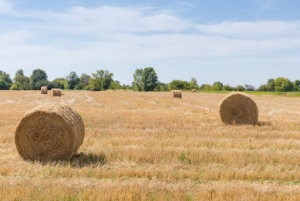You have likely encountered baling twine when you have been to a farm. This versatile material is used in various agricultural applications, but its primary function is to secure bales. It is available in many different weights, colours, and materials and can serve many different purposes.
 Baling twine is a versatile material made from natural and synthetic fibres. It is often green or orange in colour and is often used to tie up newspaper or hay. It is strong enough to endure years of use and is easy to trace. In addition to its use in agriculture, it is also environmentally friendly.
Baling twine is a versatile material made from natural and synthetic fibres. It is often green or orange in colour and is often used to tie up newspaper or hay. It is strong enough to endure years of use and is easy to trace. In addition to its use in agriculture, it is also environmentally friendly.
Twine is a renewable resource and is an excellent choice for packaging. It is also widely used on farms, ranches, stockyards, and arenas. In addition, it can be an excellent choice for bales, as it can hold knots securely and is biodegradable.
Baling twine is a versatile material for securing large objects like hay, ladders, and trellises. It also serves as a helpful doormat and hay net. It is also an excellent measuring tool, and it is also recyclable. It is a great addition to a farm.
While https://unipak.com.au/baling-twinebaling twine has several advantages, it benefits farmers and ranchers. Among its many benefits, baling twine helps livestock owners reduce food waste and is beneficial to the environment.
Baling twine is a thin, synthetic twine with a small diameter used to bind fibrous materials together. Its tensile strength ranges from 95 to 325 psi. This twine is a biodegradable material. Its uses include baling hay and straw and can also be used in constructing fences.
Sisal twine
There are many benefits to using https://unipak.com.au/baling-twine sisal twine when you’re baling hay or straw. The natural fibre is biodegradable and comes in various colours, making it an eco-friendly choice. Sisal twine can be used for baling because of its durability, and it will keep your bales in good condition for many years. Plus, it doesn’t damage your land.
Twine is more affordable than netwrap and requires fewer turns per bale. However, it is time-consuming and requires more effort. Therefore, before you start baling, you should determine the cost of twine by estimating the number of bales you’ll be wrapping. This way, you can compare the cost of twine against the time it will take to wrap each bale.
If you’re interested in learning more about the benefits of sisal twine, you can purchase a research report that includes the details of each product. This report will give insight into sisal twine’s characteristics and other baling materials. In addition, you’ll be able to see which products are more profitable and which ones will have a higher impact on your bottom line.
Reyenvas baling twine is another option for balers. This material offers excellent knot strength and UV protection, making it an economical choice. Reyenvas twine also features ultra-grip technology that prevents knot slippage. It’s also available in various colours and is easy to feed. Reyenvas is known for its high-quality baling twine and is one of the top producers in Spain.
Biodegradability
Biodegradable baler twine is a great way to reduce your overall cost per bale. You can use it as an alternative to sisal twine and save 33%-50% on input costs. Plus, it offers comparable tensile strength to sisal twine.
Other benefits of biodegradable baling twine include decreased operating costs and lower environmental impact, and a biodegradable twine is also an excellent option for greenhouses. In addition, it can support crops and collect the plant’s residual mass. It helps improve productivity while also reducing transport costs.
Another benefit of sisal twine is its biodegradability. While plastic twine can remain in landfills for years, sisal twine can degrade before bales are moved. As a result, plastic twine will remain in the rumen of cows for as long as 14 days.
Cost
The cost of Baling twine is an essential part of the baling process, and it can vary depending on what type of twine you use. Solar-degradable twine, for example, costs 50 cents per bale, but the savings you get from saving time wrapping bales more than offsets this cost.